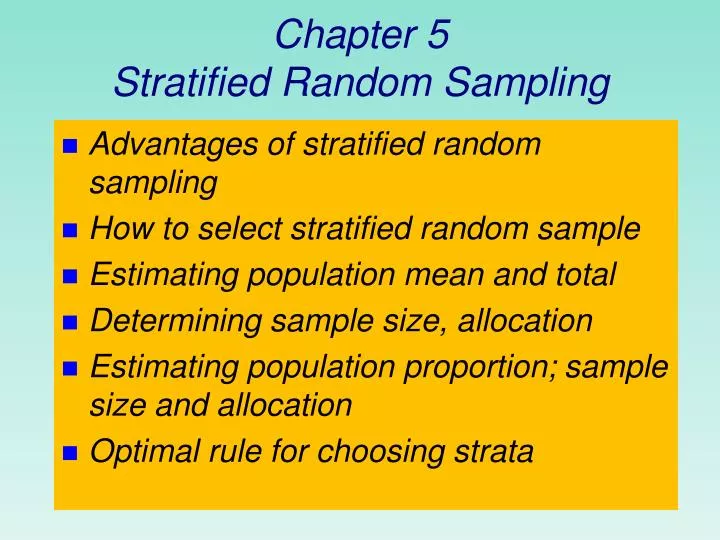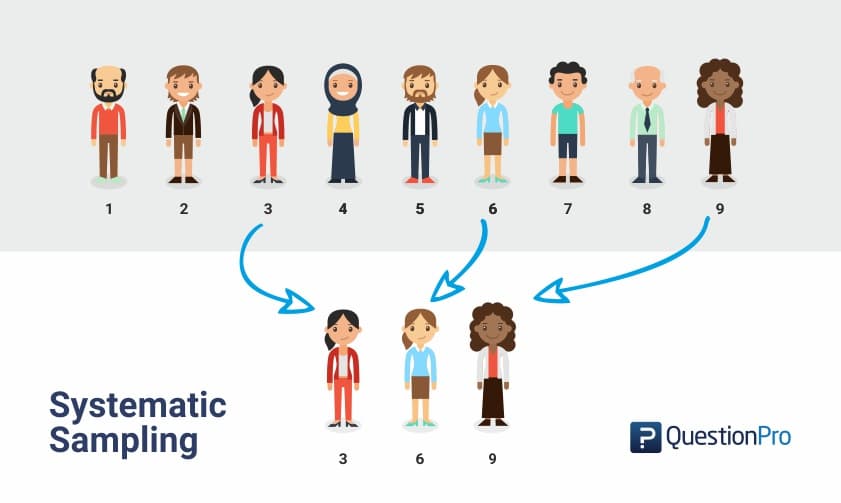

Representative means the extent to which a sample mirrors a researcher’s target population and reflects its characteristics (e.g., gender, ethnicity, socioeconomic level).As an entire population tends to be too large to work with, a smaller group of participants must act as a representative sample. A sample is the participants you select from a target population (the group you are interested in) to make generalizations about.You could segment on rural, urban, suburban, and then take a random sample within each. For example, if interested in distance to clean water for populated areas in a region, you must first have a list of all of these regions. Note that this requires knowing the population of interest.Within each category take a random sample. Segment your population into the predetermined key categories of interest.If you are afraid that you will not obtain enough people (observations) for one of your key categories in a simple random sample, then a stratified random sample is a viable alternative.


Stratified random sampling trial#
In particular, it examines views regarding individual compensation for participation and post-trial benefits to the community in which the trial took place. In Grady et al (2008) the study examines the views of research participants in a hypothetical HIV vaccine study. (Investigators oversample in the smaller strata in order to increase their sample size, which is necessary to conduct proper statistical analyses.) In practice, stratified random sampling along with other more complex sampling techniques are employed in large-scale surveys, especially governmental censes, to reduce some of the logistical costs associated with collecting information from a sample. Stratified random sampling is used instead of simple random sampling when the categories of the strata are thought to be too distinct and too important to the research interest, and/or when investigators wish to oversample a particularly small group of interest. every element in the population can be assigned to only one stratum), and no population element can be excluded in the construction of strata. Each strata should be mutually exclusive (i.e. This way a randomised probabilistic sample is selected within each stratum. The second step is to take a simple random sample within each stratum.

The strata are chosen to divide a population into important categories relevant to the research interest.įor example, if interested in school achievement we may want to first split schools into rural, urban, and suburban as school achievement on average may be quite distinct between these regions. Stratified random sampling is a probabilistic sampling method, in which the first step is to split the population into strata, i.e.


 0 kommentar(er)
0 kommentar(er)
